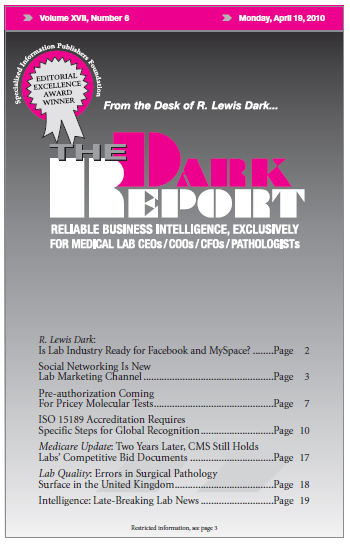CEO SUMMARY: Using social marketing sites on the Web allows labs and IVD manufacturers to interact with customers in ways that were not possible years ago. Marketers use these interactive web sites to supplement traditional methods of advertising. Inviting customers to discuss your company and products on a Facebook site can result in powerful word-of- …
Social Networking Is New Lab Marketing Channel Read More »
To access this post, you must purchase The Dark Report.


